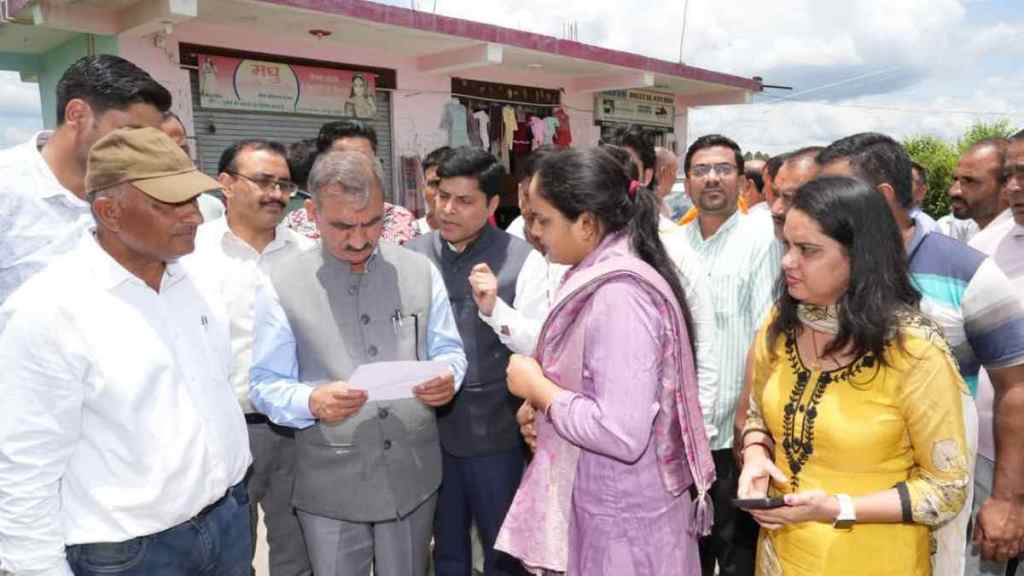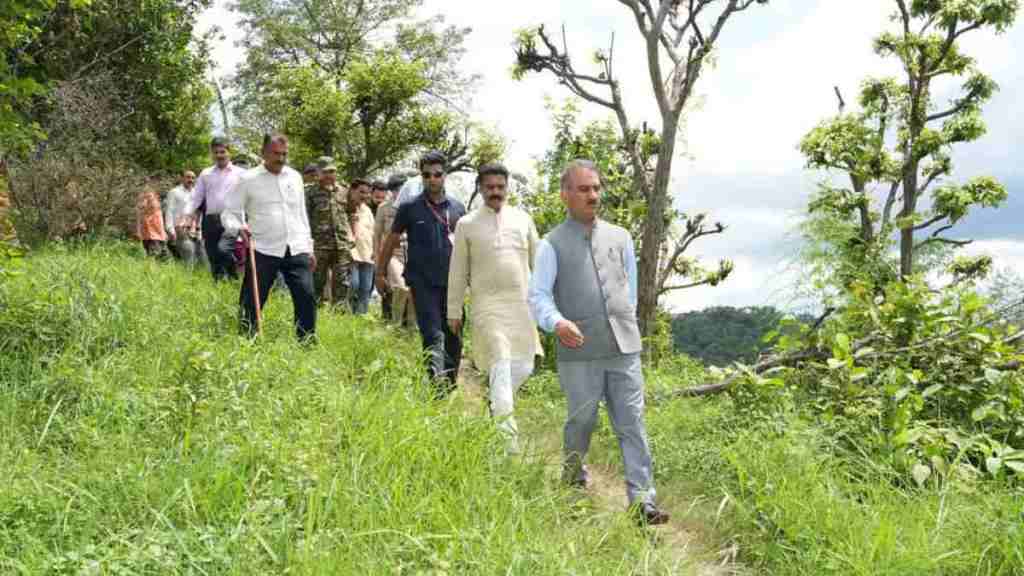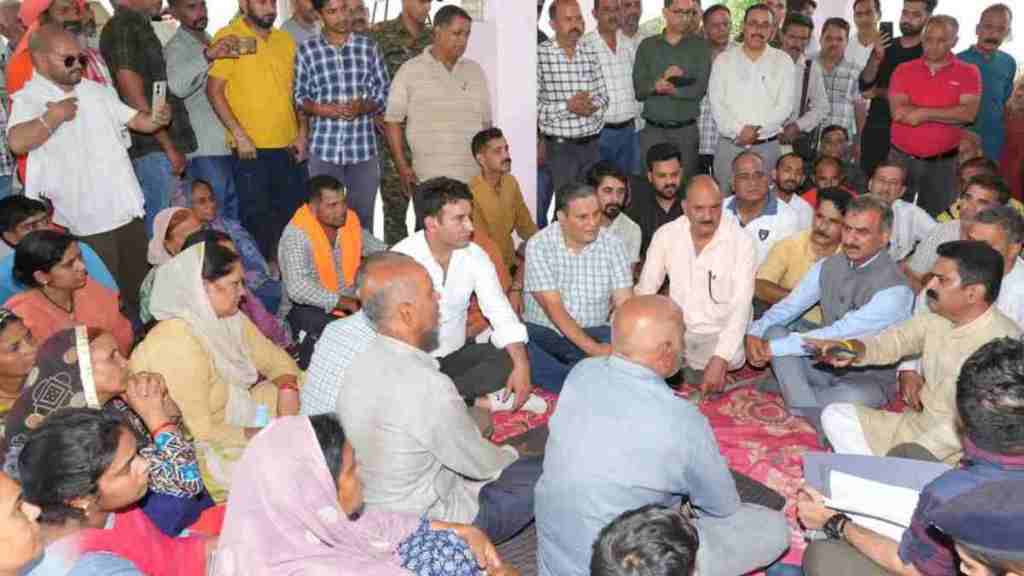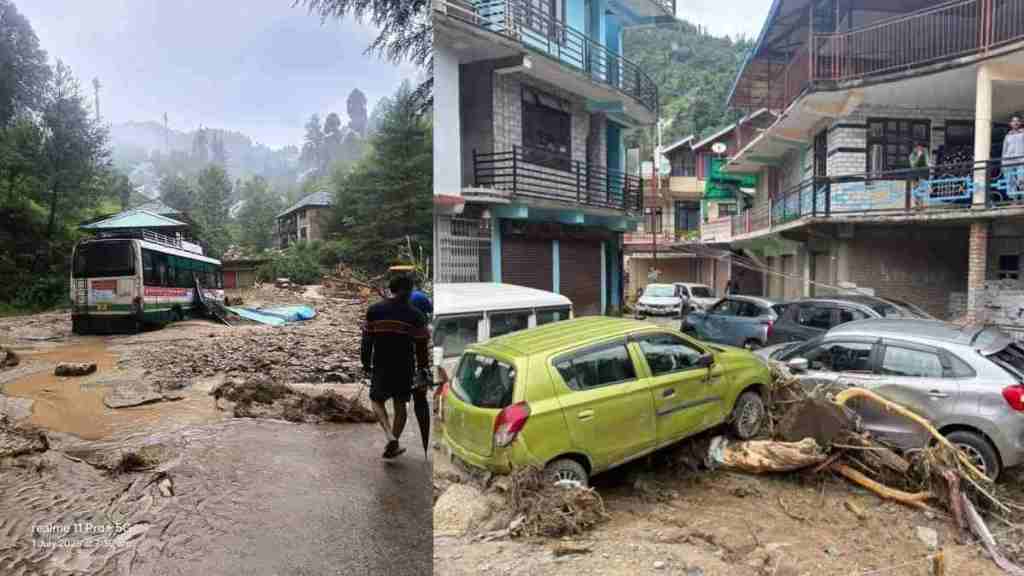Environmentalists are sure that the devastation being brought about by excessive rain, causing landslides in Himachal Pradesh, is nothing but a dangerous manifestation of the climate change impact. Guman Singh, a well-known environmental activist and coordinator of the Himalaya Neeti Abhiyaan, believes that the recent flash floods that have caused excessive damage to people and their properties are due to climate change and that the need of the hour is improving infrastructure.
The western disturbances were supposed to retreat in April and May, but they instead extended their stay, Guman Singh and other environmentalists of the region say. And this, according to them, resulted in a collision with the early monsoon, leading to heavy rainfall.
The main areas affected include the Pir Panjal mountain range, stretching from Rohtang to Kangra. Flash floods have occurred in regions at elevations between six to eleven thousand feet. “This phenomenon is a consequence of climate change. We must learn to adapt to such situations by improving our infrastructure. The people of the Himalayas need to be resilient, and the government should consider better options for providing infrastructure and facilities in these challenging circumstances,” he said in conversation with news24online.com

On the night of July 1, 2025, a natural disaster struck the Seraj area, particularly the Thunag subdivision of Mandi district in Himachal Pradesh, causing unprecedented devastation. Multiple cloudbursts and flash floods have led locals to describe this event as the worst disaster of the century.

Approximately 80,000 people have been affected, and hundreds have been left homeless. Preliminary estimates indicate that more than 150 houses and shops in Thunag bazaar have been destroyed, while over 400 houses in the subdivision have sustained partial or total damage. The data is collected by a team of environmentalists from the Himalayan Neeti Abhiyan and government sources.

The disaster has severely impacted Thunag and other areas, including Jarol, Deji Pakharair, and Pandavashila. To date, 9 bodies have been recovered: 7 from Thunag bazaar, 1 from Jarol bazaar, and 1 from Pandavashila. Additionally, 17 people from Deji Pakharair and 2 from Pandavashila are reported missing. Jarol bazaar has been obliterated, and there has been significant damage to infrastructure in Thunag. All roads and bridges have collapsed, leaving the area completely cut off. The destruction of power and water systems has led to a severe ration crisis, and mobile networks are down, complicating communication. Hospitals, schools, and government buildings have also been affected, and full restoration may take months. Several houses and cow sheds collapsed in the villages of Serthi and Bhadrana, but fortunately, there were no casualties or significant property loss there.

The National Disaster Response Force (NDRF), State Disaster Response Force (SDRF), police, and District Disaster Management Authority (DDMA) immediately initiated relief and rescue operations. Two teams each from the NDRF and SDRF have been deployed in Mandi and are actively working in Thunag, Gohar, and Karsog. So far, 332 people have been evacuated, including 278 from Mandi. Sixteen individuals (12 children and 4 women) from Jayuni Khad and 7 families from Ricky village have been moved to safer areas. However, rescue operations face significant challenges due to the destruction of roads and bridges. Police teams have reached Pandavashila from Janjheli, while SDRF teams have arrived in Bagsyad.
The disaster in Thunag, Seraj, is not only causing a significant loss of life and property but is also undermining the socio-economic structure of the region. Without an immediate aerial survey, assistance from the army, and the extensive support of the National Disaster Response Force (NDRF), overcoming this crisis will be challenging. Guman Singh the prominent Environmentalist in Kullu Valley, who is coordinator of Himalayan Neeti Abhiyan with Hem Singh and the villagers of Seraj valley have urgently appealed to the government for an aerial survey and requested for a quick assessment of the situation

The failure of mobile networks is hindering the collection of information, forcing people to live outdoors, and exacerbating the ongoing ration crisis. Furthermore, the Indian Meteorological Department (IMD) has warned of additional rainfall in the next 24 hours, which could further complicate the situation. Himachal is facing the worst disaster of the year, some are calling it the disaster of the century. The political temperatures soared up as one of the ministers of the state, Panchayati Raj, Anuridh Singh, who in a fit of anger injured an NHAI official , Achal Jindal, at Bhattakufer, Shimla during a meeting as a five-story residential building caved in at Bhattakufer which is situated on the National Highway.
An FIR has been registered against the minister after the intervention of Cabinet Minister for Road and Surface Transport, Anirudh Singh later held a press conference yesterday and accused NHAI for many issues in the state. People are holding NHAI responsible for many such incidents .
ALSO READ: Early Monsoon In Himachal Triggers Unexpected Flash Floods











